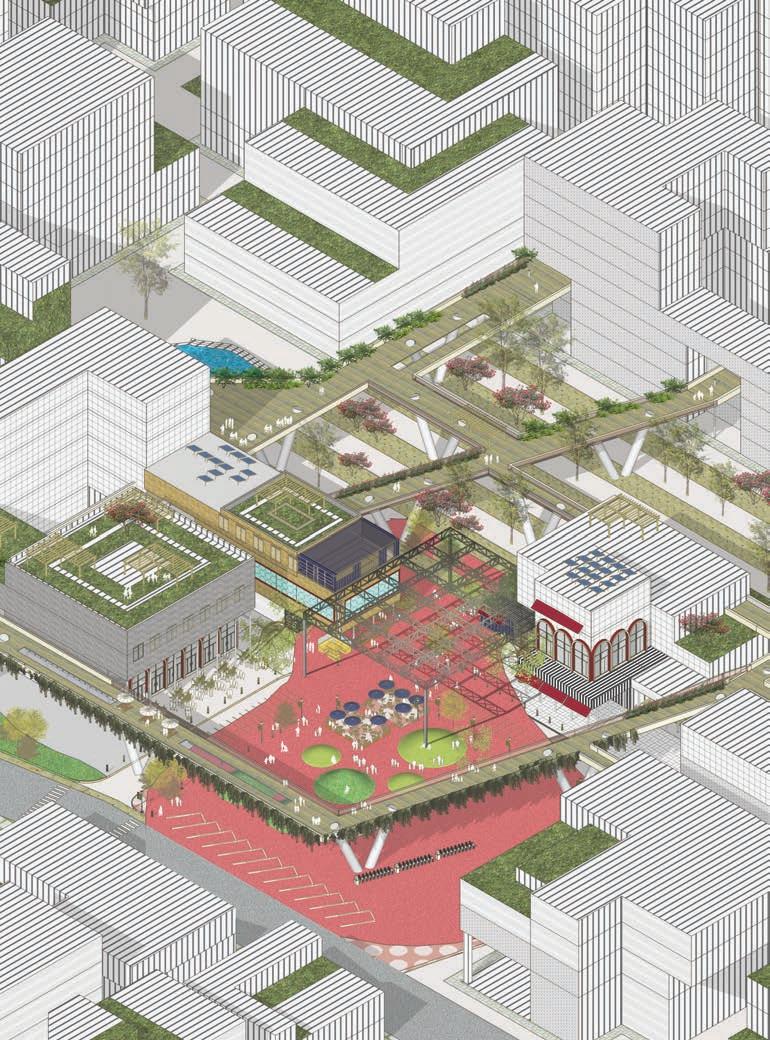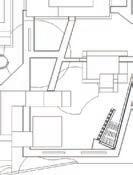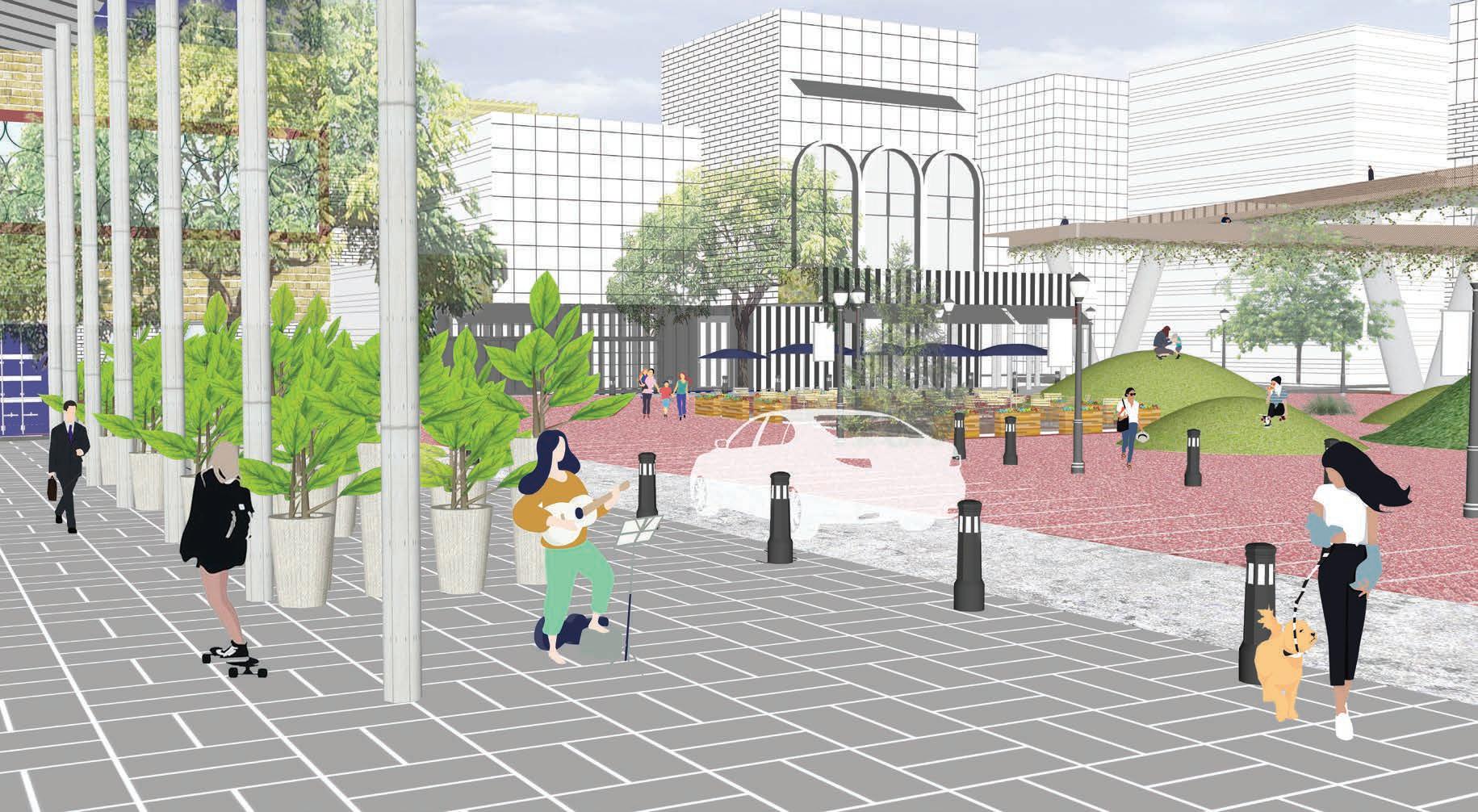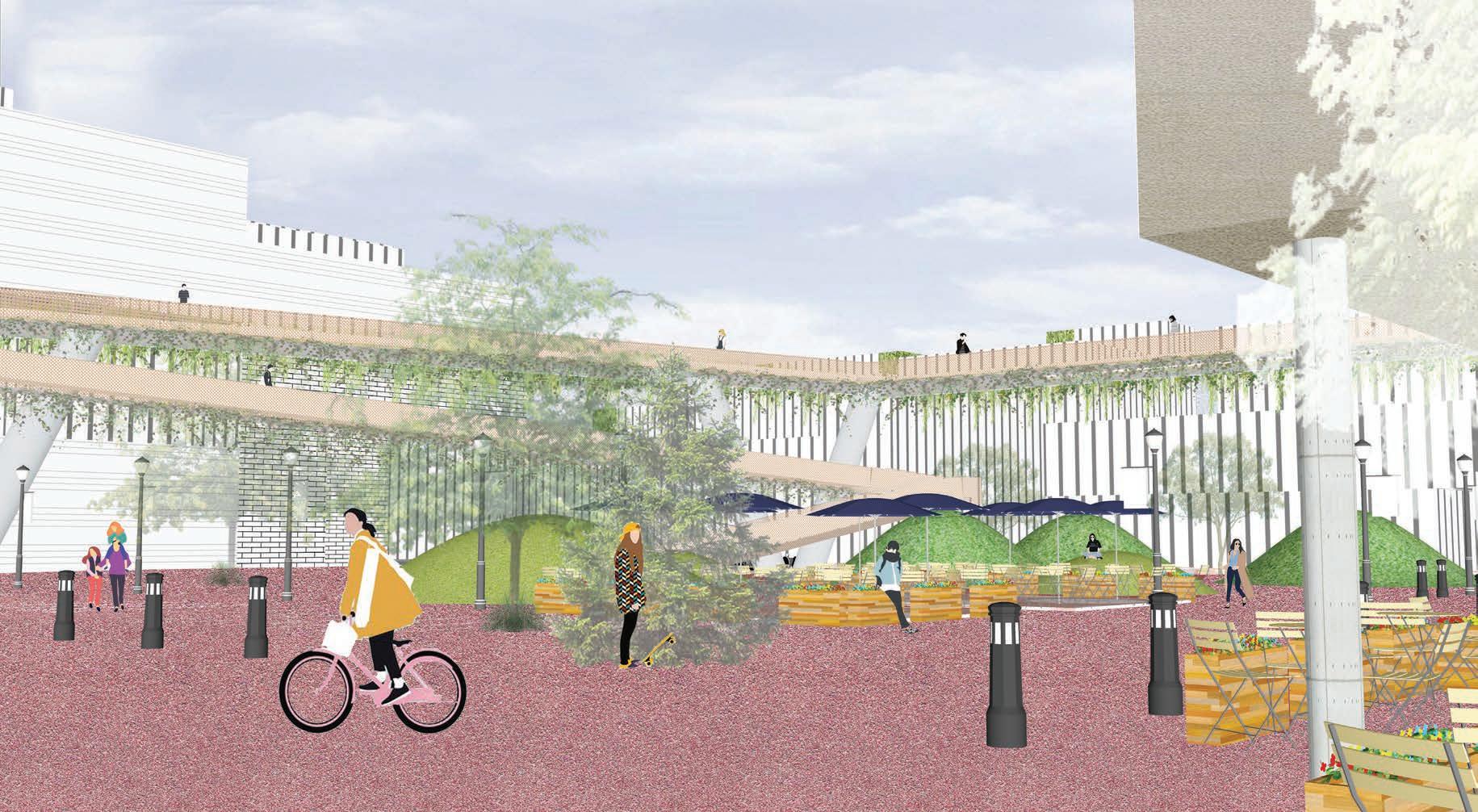Faculty
Leire Asensio Villoria
Team
Radhika Goyal
Divya Anikumar Menon
Chi Nga Larissa Tse

Faculty
Leire Asensio Villoria
Team
Radhika Goyal
Divya Anikumar Menon
Chi Nga Larissa Tse
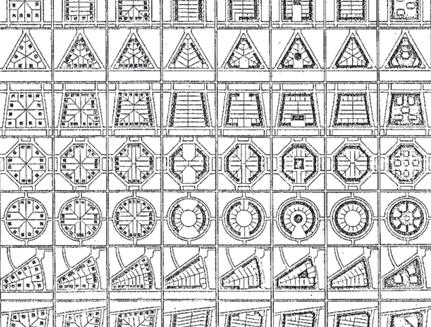
MELBOURNE UNIVERSITY
MELBOURNE SCHOOL OF DESIGN
FACULTY
STUDIO LEADERS
Leire Asensio Villoria Senior Lecturer in Architecture and Urban Design
MELBOURNE SCHOOL OF DESIGN
Julie Willies, Dean
Andrew Hutson, Deputy Dean
Alan Pert, Director, Melbourne
School of Design
Donald Bates, Chair of Architectural Design
Elek Pafka, Coordinator of the Master of Urban Design
REVIEWERS
David Mah, Senior Lecturer
Justyna Karakiewicz, Associate Professor
Alan Pert, Director, Melbourne
School of Design
Donald Bates, Chair of Architectural Design
STUDENTS
Hei Tong Choi
Yanjun Duan
Radhika Goyal
Antonio Huang
Kamila Kaniski
Mukul Kogje
Divya Anikumar Menon
Aneree Ajaykumar Parekh
Mahasakthi Selvakumarasami
Ying Shi
Chi Nga Larissa Tse
Hang Zhao
Printed by MSD
SPECIAL THANKS
We would like to thank the following individuals, for without their efforts this publication wold not have been possible:
Alan Pert & Donald Bates
Urban Design
Studio A
While the suburbs have become a familiar and prevalent model of urbanization, the drive to offer an alternative to the congestion and density of the city has historically been a valuable area of exploration for the design disciplines. The advent of a counter movement to the 19th century metropolis has encapsulated a broad spectrum of exemplary figures, theories and experiments in urbanism. Frederick Law Olmsted, Ebenezer Howard, Raymond Unwin, Frank Lloyd Wright, Reyner Banham, Robert Venturi with Denise Scott Brown, Marion Mahoney with Walter Burley Griffin, Ludwig Hilberseimer with Mies Van Der Rohe, the Hampstead Garden Suburb, Riverside, Broadacre City, Lafayette Park, Learning from Levittown, Los Angeles; The Architecture of Four Ecologies, Castlecraig and Eaglemont are just a few of these notable contributions to urbanism. The common motivations underpinning these projects could be seen to have been an impulse to offer a model for living environments that would enable lifestyles more closely related to the open spaces and gardens that had been absent within the metropolis. Today, notable experiments in suburban living persist with much of contemporary innovations in architectural, landscape and urban design often taking place in the city’s periphery or its suburbs. However, with a growing awareness of the limitations in extending the suburbs as a sustainable model for urbanization and the massive burdens it can impose on our infrastructure, social lives and health, much of this activity has centered around a wider professional and disciplinary mandate to address the tension between the enduring desire for “a house with a garden” against pressures for higher densities.
This tension is an imminent concern for Melbourne, where its legacy of extensive suburbanization runs counter to challenges posed by the projections for steady
population growth as well as a transforming demographic. While higher density development and strategies of suburban renovation offers intelligent means for addressing these concerns forecasted for the city, inertia and entrenched cultural values invested in suburban ways of living can conflict with these larger planning ambitions.
In this studio, you will be tasked with investigating how Melbourne’s proposed metropolitan centers of growth in its suburban extensions may densify intelligently. You will consider how these new centers may also enable this densification while also addressing a model for urbanization that is sensitive to concerns surrounding crucial aspects of sustainable development as well as enabling the cultivation of civic and ecologically enriched urban spaces or environments.
The studio will engage with these sites in order to offer tangible design proposals that adopt a projective attitude towards addressing the opportunities offered by this apparent contradiction between an objective need for more compact forms of urban development with a persistent desire to conserve (or reclaim) the treasured qualities offered by suburban living.
Leire Asensio Villoria, Senior Lecturer in Architecture and Urban Design
February 2020

Population in 2013 1.05M
Estimated growth 150-200K
https://www.sro.vic.gov.au/ckfinder/userfiles/files/Map-of-greater-Melbourne-2018.jpg
Box Hill is a suburb 14km east of Melbourne’s CBD. It was part of Melbourne’s eastward expansion of the metropolis in the late 1950s. This place also had its own large history, its own municipality in the former City of Box Hill and its own suburbs. In recent years, Box Hill has become
notable for its significant growth of Asian population. The numerous Asian restaurants and retailers in its shopping district have contributed to the visibility of this aspect of the suburb’s demographics since the 1990s. This makes Box Hill a major transportation hub in the eastern suburbs.

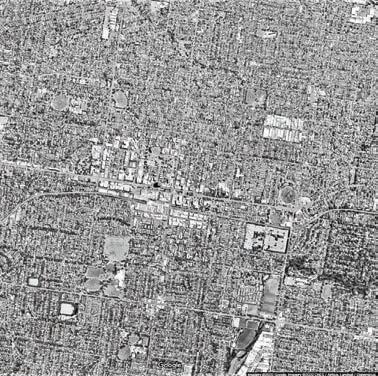

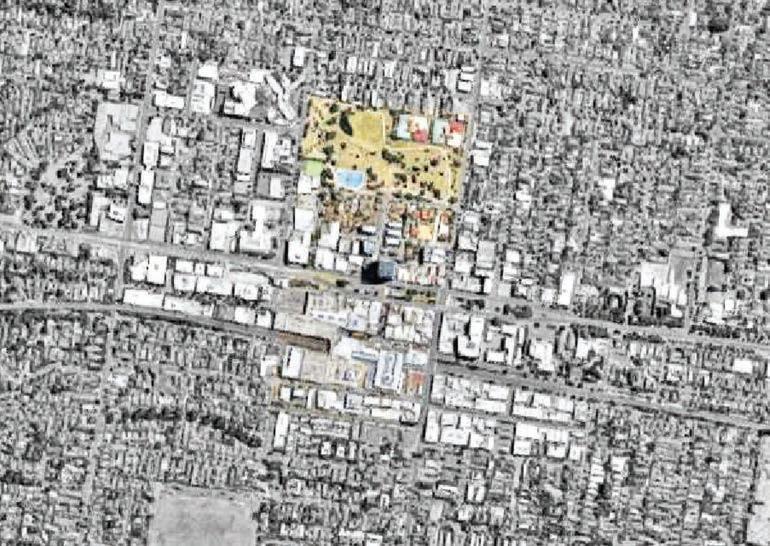










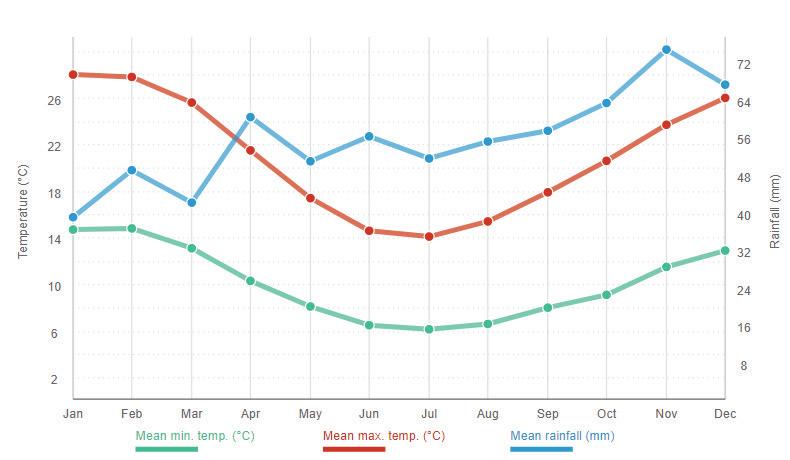
Demographics
Population Spoken languages


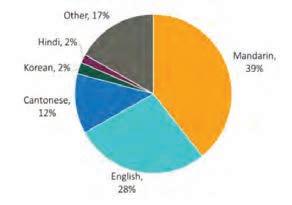

Source: https://www.whitehorse.vic.gov.au/sites/whitehorse.vic.gov.au/files/assets/documents/Box%20Hill%20MAC%20Analysis%20and%20Options%20Appendices. pdf; http://www.meteorology.com.au/local-climate-history/vic/box-hill
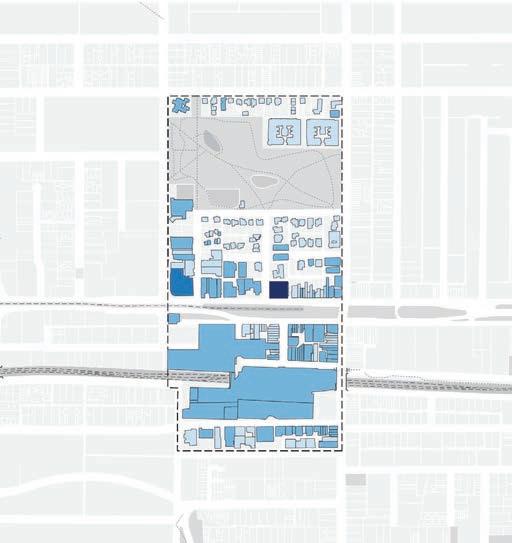













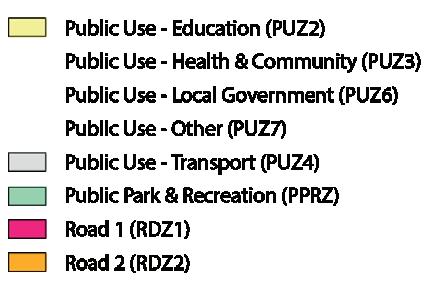

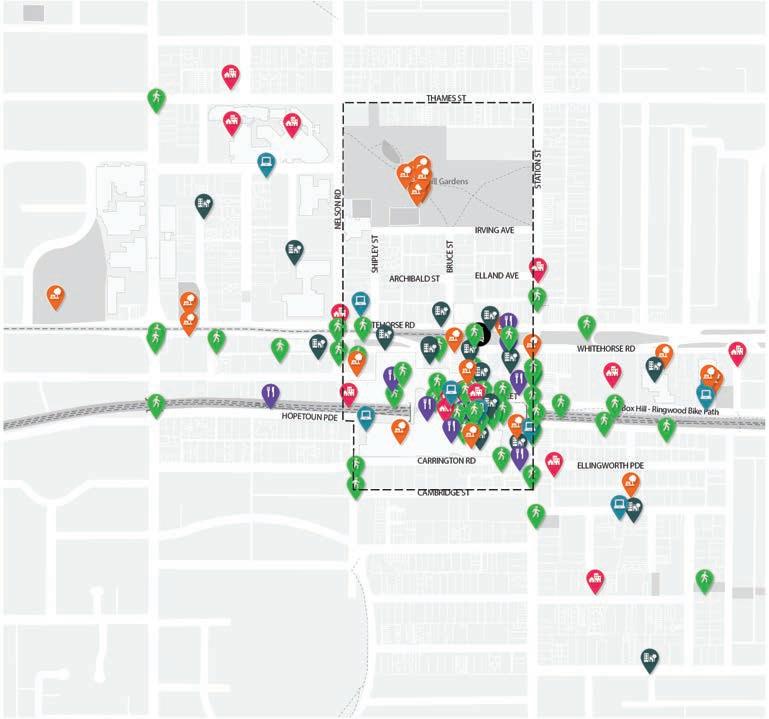





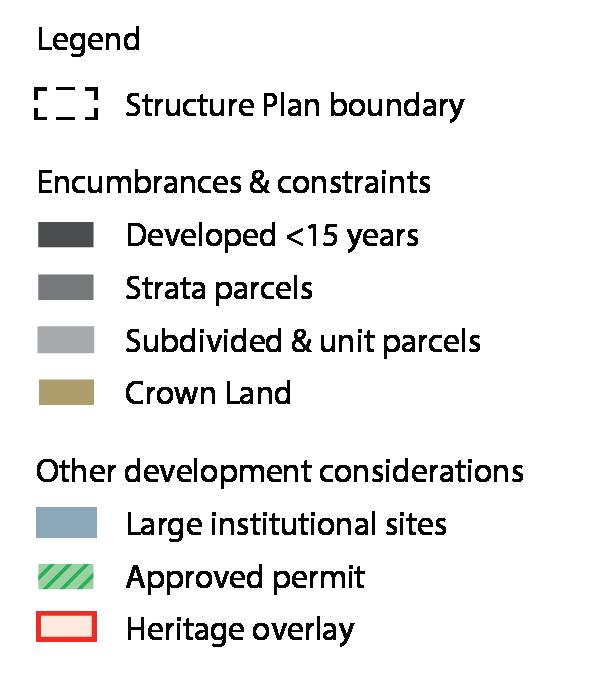
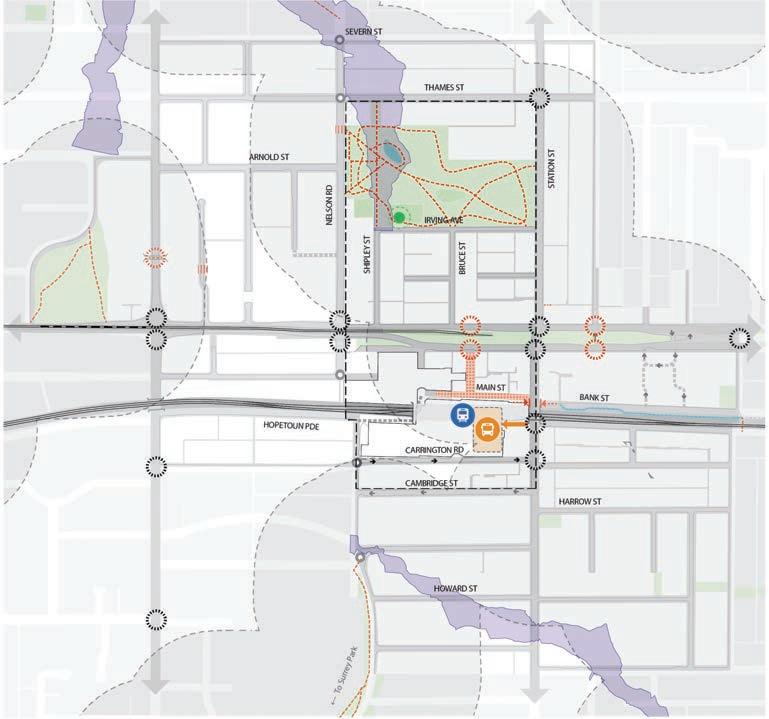


Design Strategies





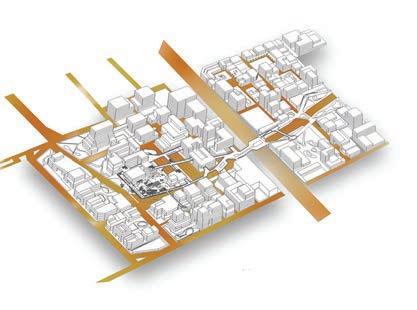
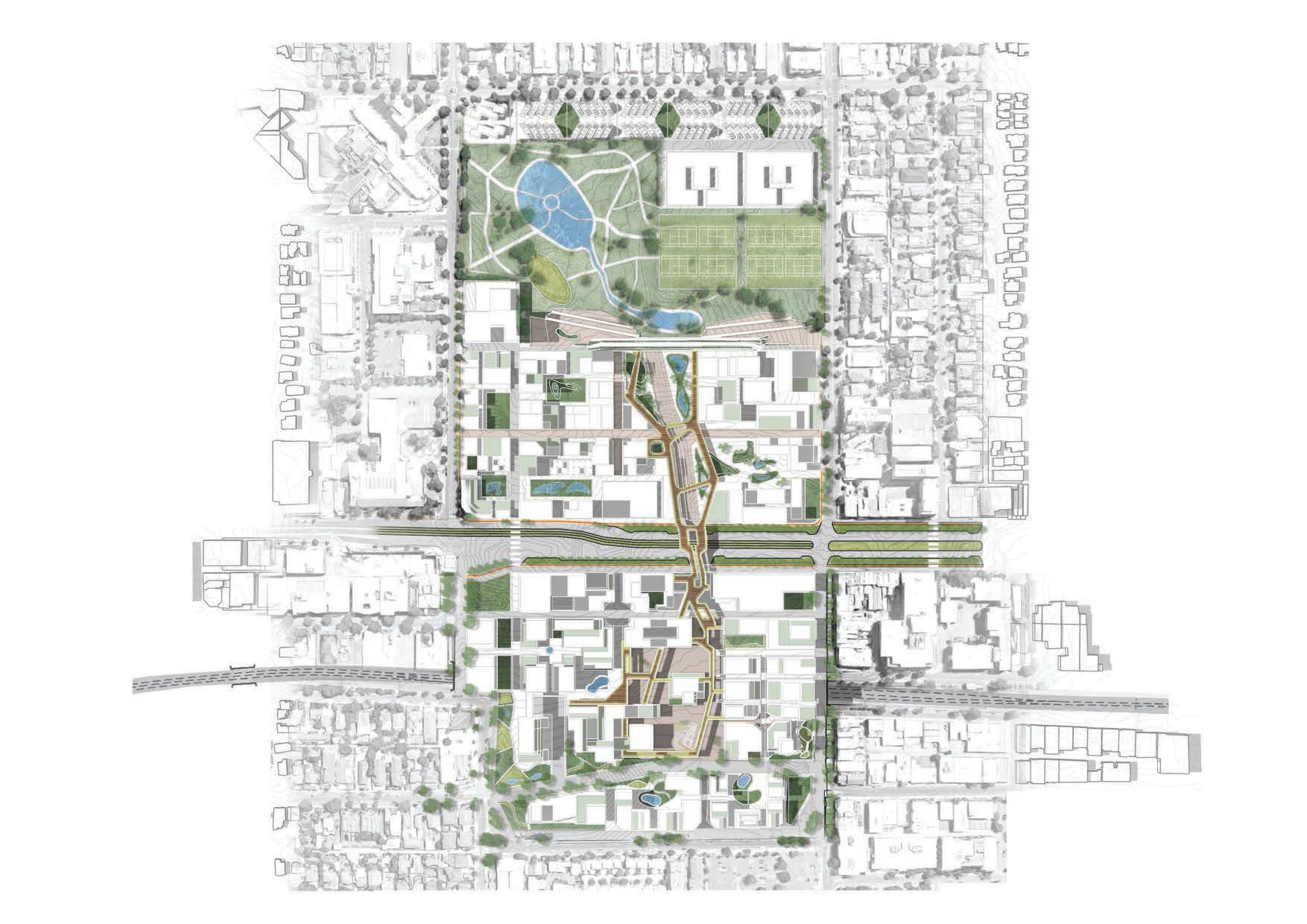

Axonometric

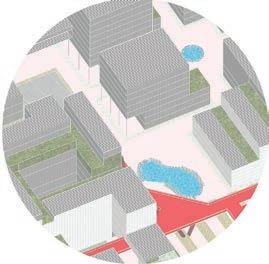





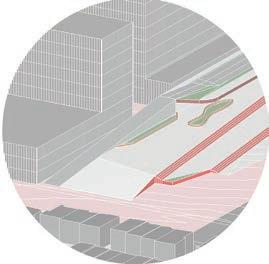












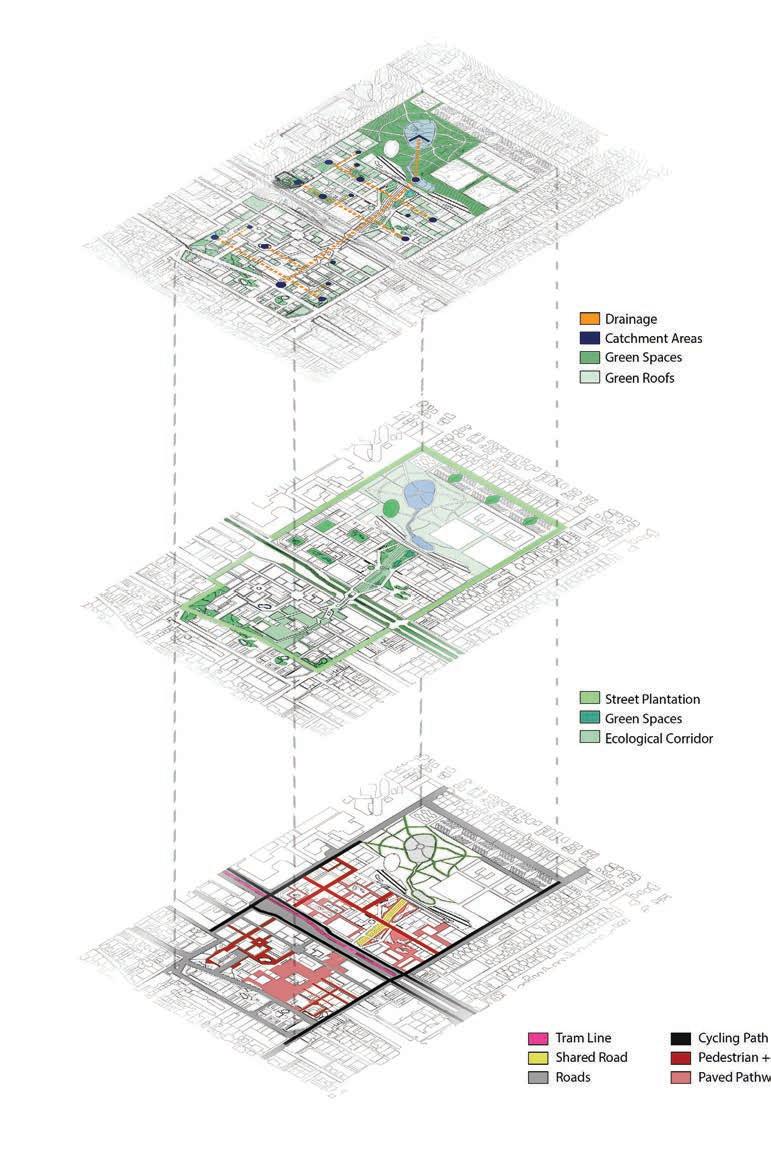


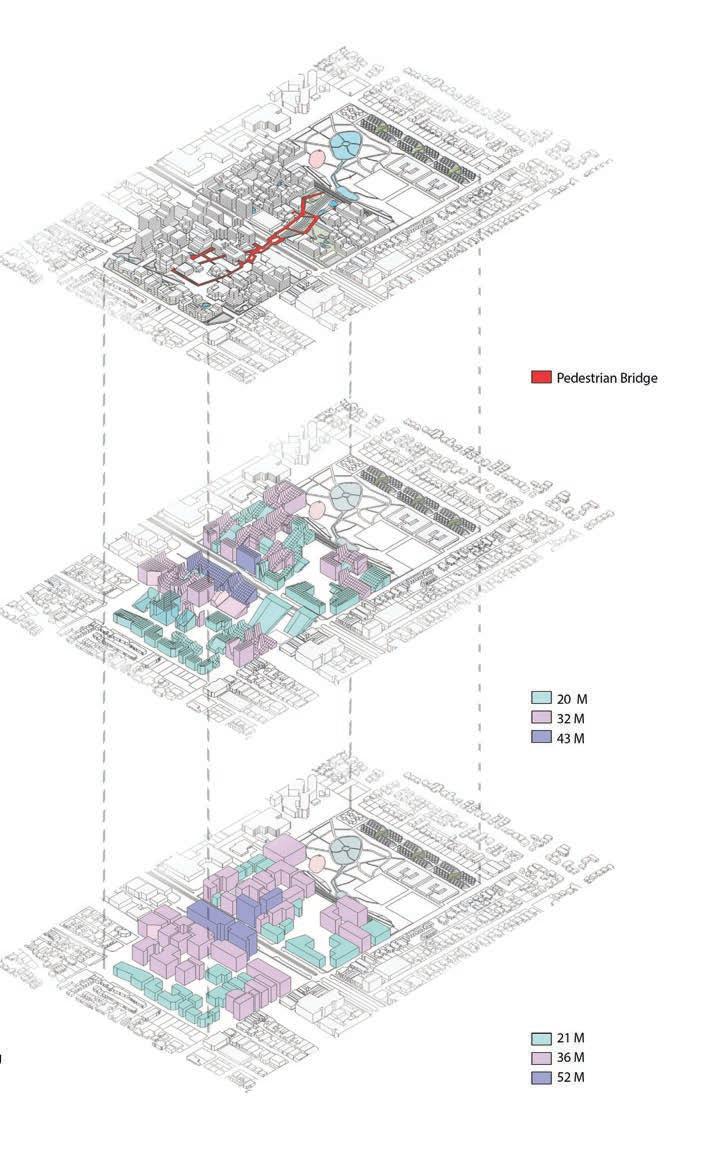


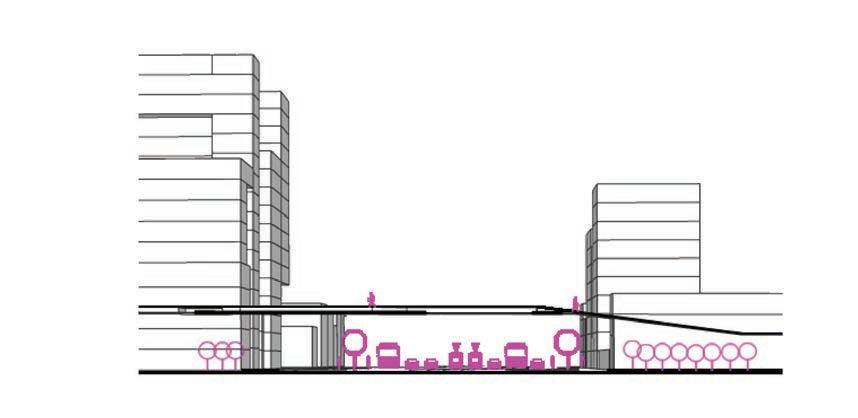
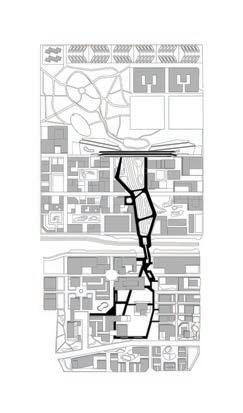
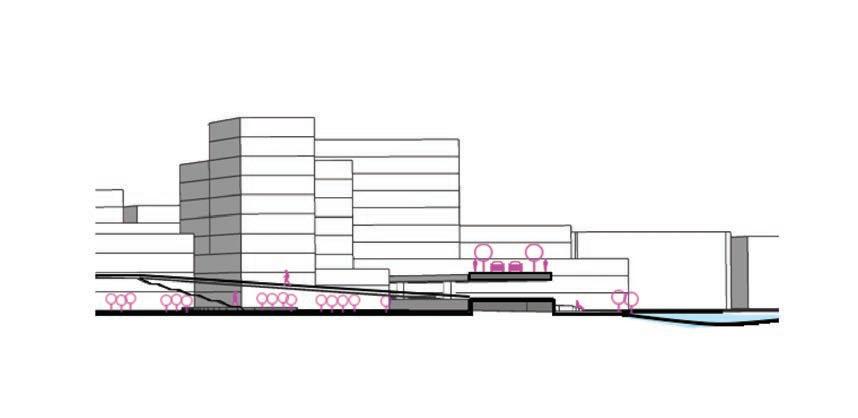



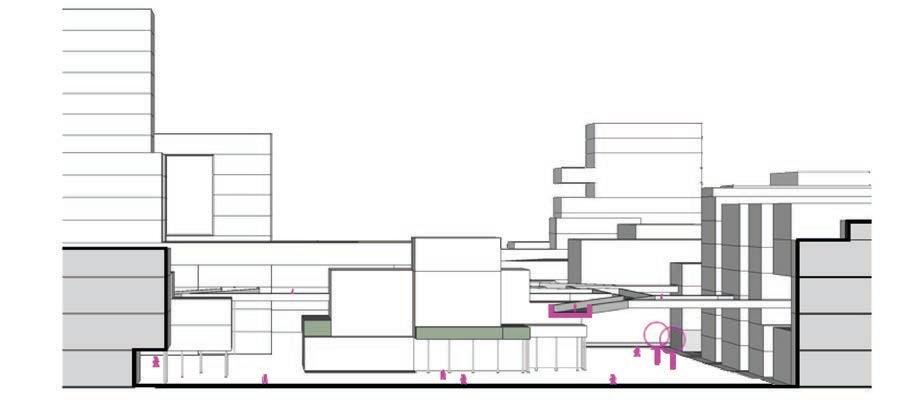







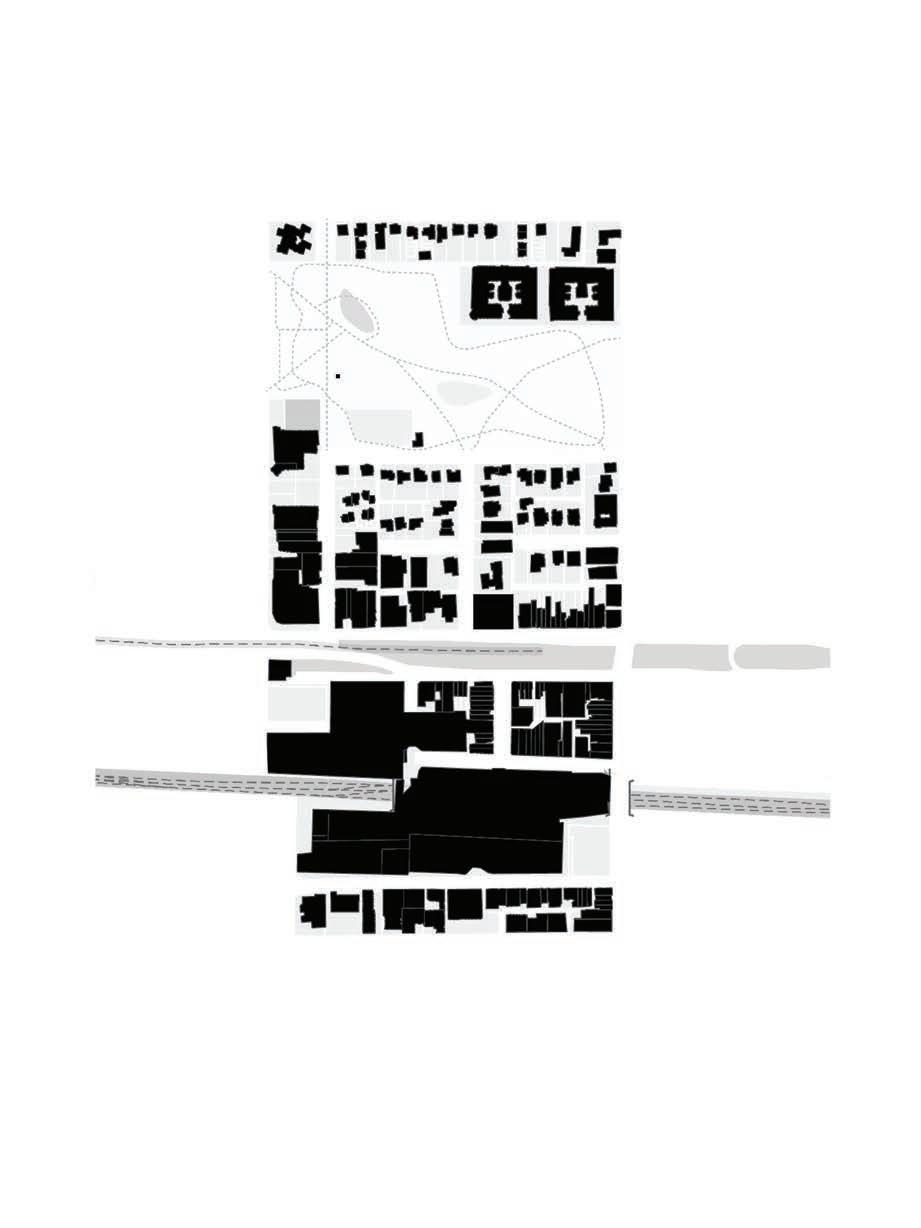

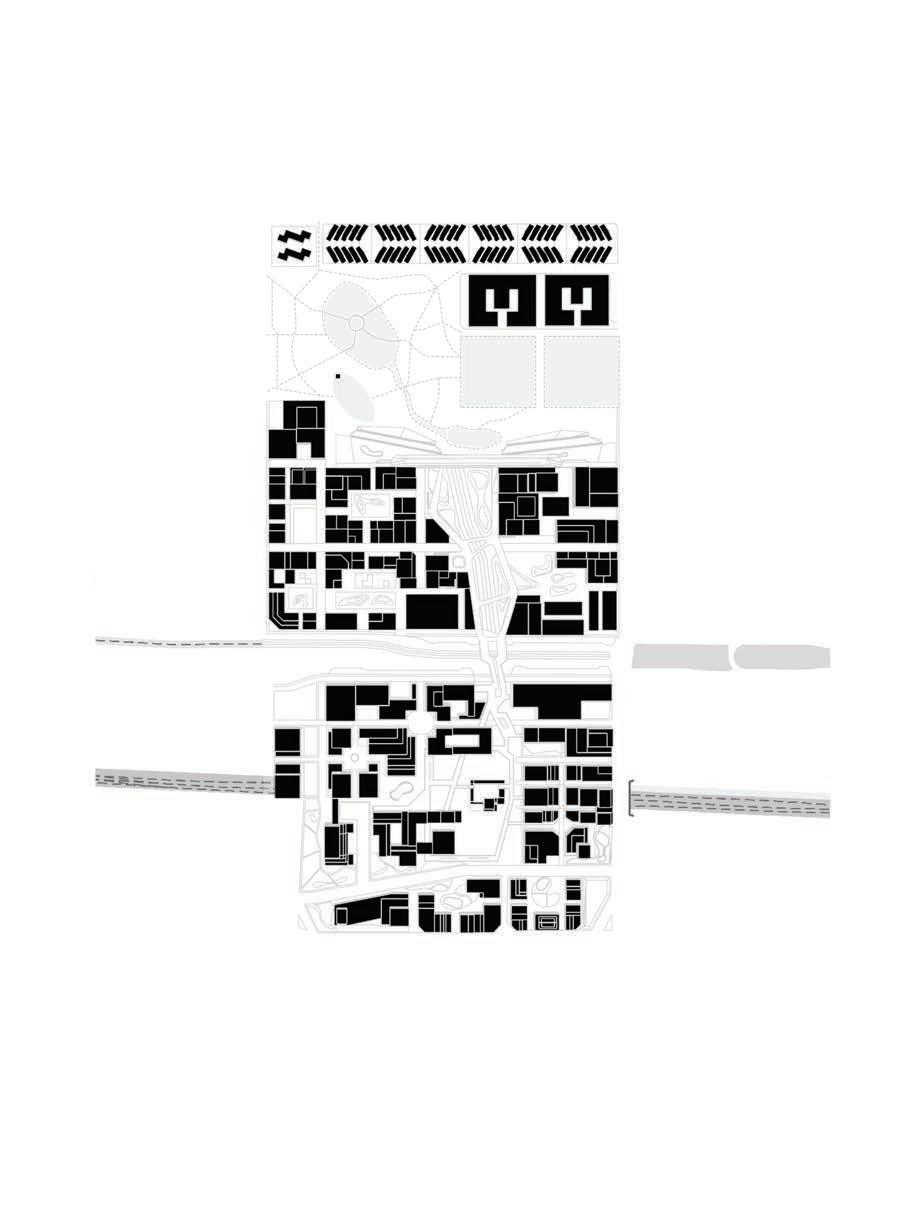




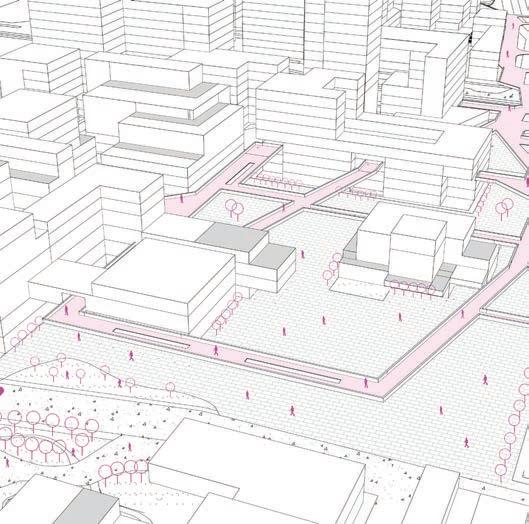
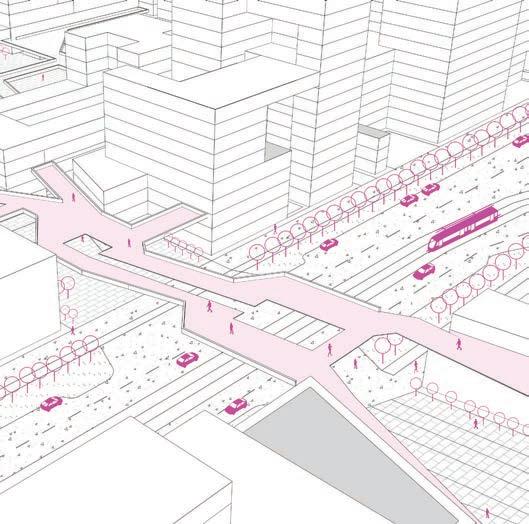







This scenario has terracing steps surrounding a central performance stage with mobile recreational activities including outdoor ping pong and chesboard act. The various pattern or geometry bring active community engagement.
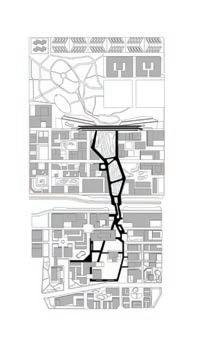
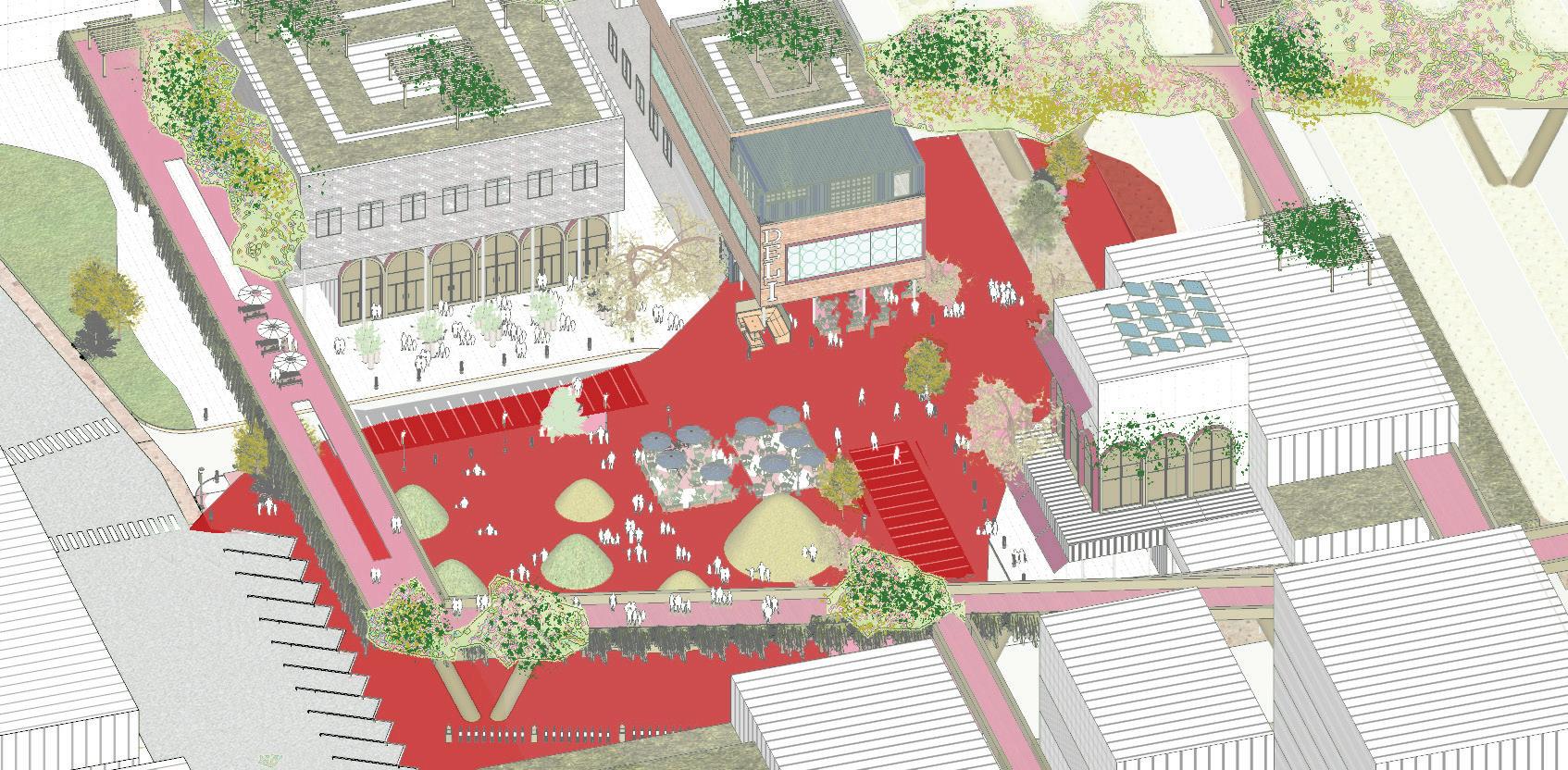
This scenario has outdoor tables and seatings integrated with playful mounds to give a relaxational experience to the neighbourhood. The bold red rubber material attracts people to the site and becomes a landmark.


This scenario turns the shared road into an informal retail street. Overhanging decorations and temporary market stores fuse with proposed lawn and water bodies, acting as a transition with the Box Hill Gaden.


This scenario turns the neighbourhood into urban forest filled with water. This improves site habitat and brings to environmental awareness by creating a new image of the city in an ecological way.

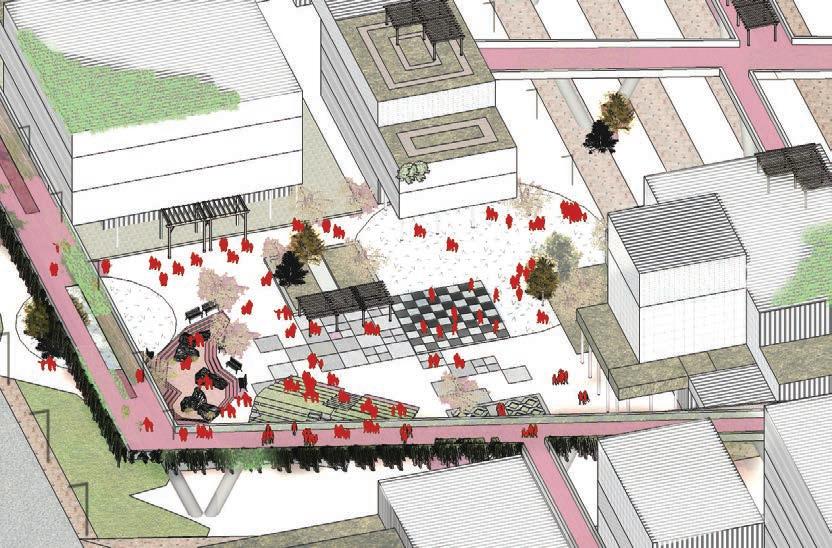
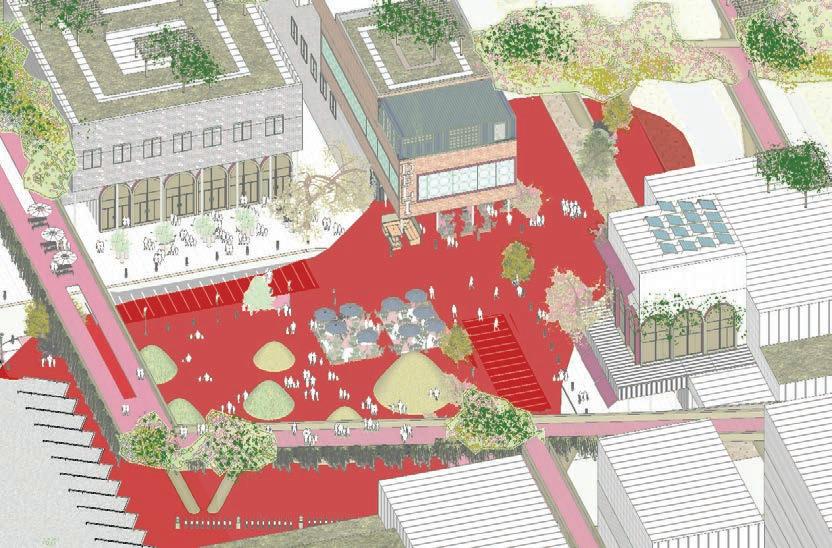

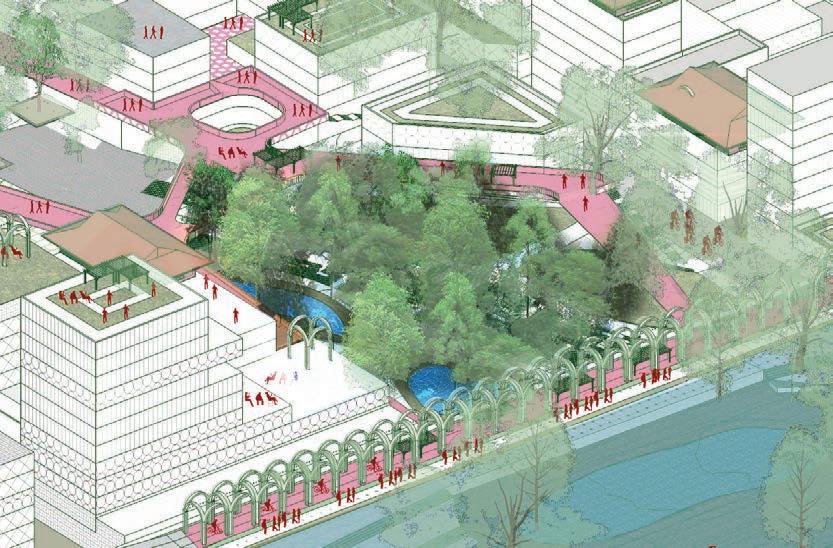
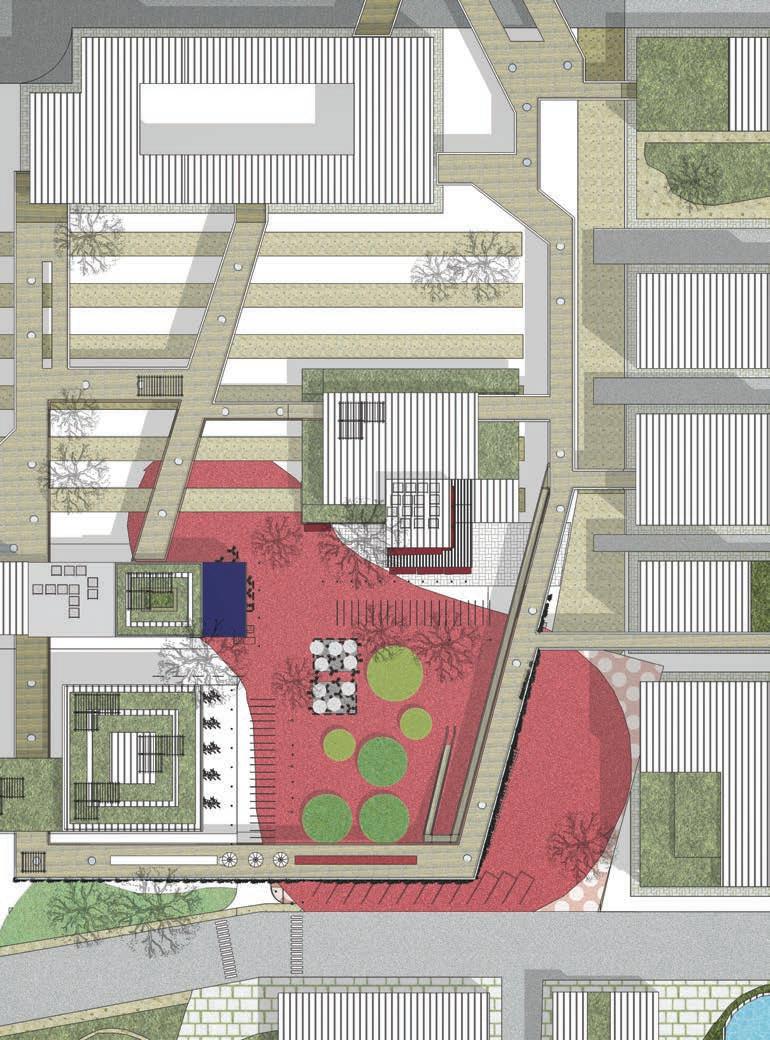

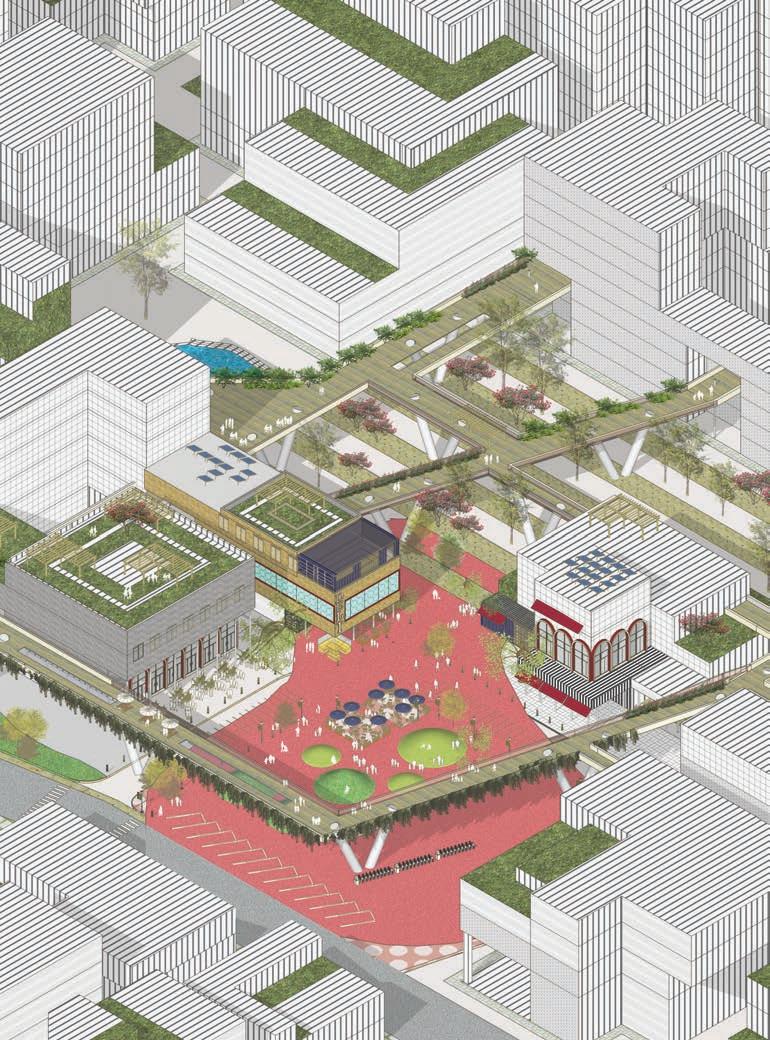
Detailed Plan (with truss)


Detailed Axonometric (with truss)
